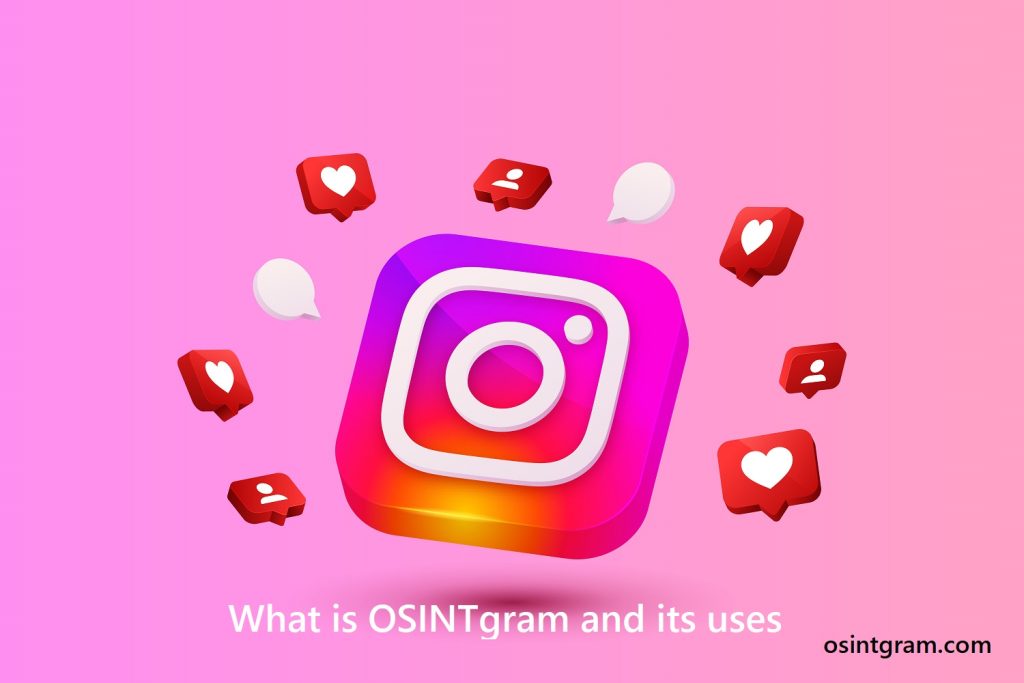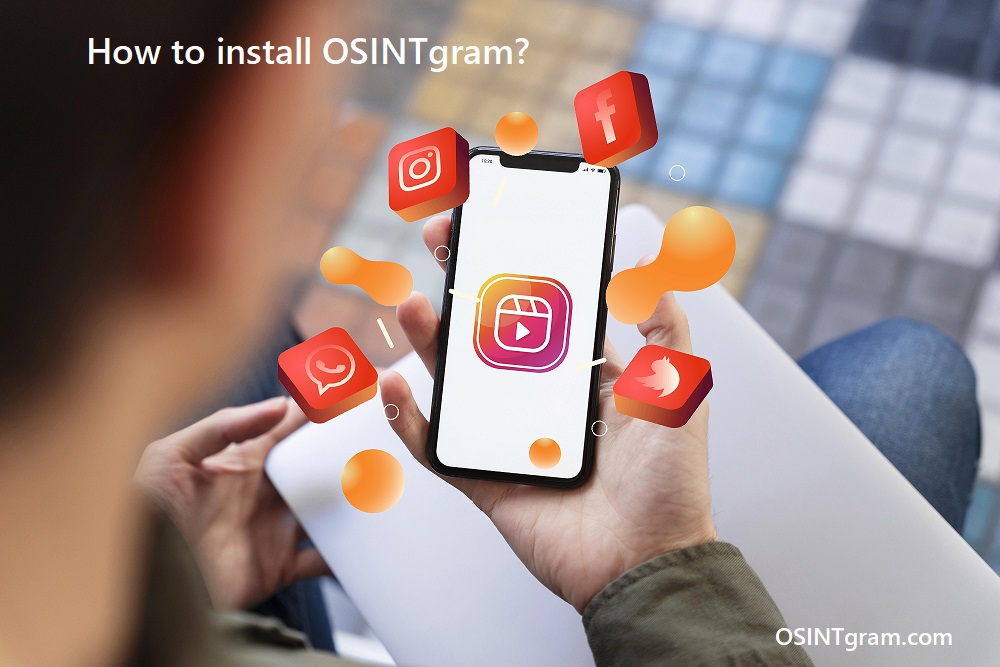OSINTgram is a powerful Python-based tool for conducting open-source intelligence (OSINT) investigations on Instagram, enabling users to collect publicly available data such as profile details, posts, stories, followers, and hashtags. While it’s a valuable resource for security researchers, journalists, and investigators, users often encounter errors during setup, configuration, or operation due to Instagram’s evolving API, dependency issues, or user-related misconfigurations. This post provides a comprehensive guide to troubleshooting and resolving common OSINTgram errors, ensuring smooth operation for your OSINT tasks. Additionally, a FAQ section addresses recurring questions to help users navigate challenges effectively.
Understanding OSINTgram and Its Challenges
OSINTgram, developed by Datalux and hosted on GitHub, relies on Instagram’s API or web scraping to gather data. It requires a valid Instagram account for authentication and interacts with Instagram’s platform within the boundaries of the authenticated account’s permissions. However, Instagram frequently updates its API, security measures, and rate limits, which can lead to errors in OSINTgram. Other common issues include installation problems, dependency conflicts, authentication failures, and runtime errors caused by incorrect usage or environmental factors. Addressing these errors requires a systematic approach to identify the root cause and apply targeted fixes.
Common OSINTgram Errors and Their Fixes
Installation Errors
One of the first hurdles users face is installing OSINTgram correctly. Since it’s a Python-based tool, it depends on specific libraries and a compatible environment. Errors during installation often stem from missing dependencies, incorrect Python versions, or issues with the package manager.
To resolve installation issues, start by ensuring you have Python 3.6 or later installed, as OSINTgram may not work with older versions. Verify this by running python –version in your terminal. Next, clone the OSINTgram repository from GitHub using git clone https://github.com/Datalux/Osintgram.git and navigate to the project directory. Install the required dependencies listed in the requirements.txt file by running pip install -r requirements.txt. If you encounter errors during this step, such as “module not found” or “pip install failed,” ensure your pip version is up to date with pip install –upgrade pip.
If specific libraries fail to install, such as instaloader or requests, it could be due to network issues or incompatible versions. Try installing each dependency individually (e.g., pip install instaloader) to identify the problematic package. For users on Windows, ensure you have a compatible C++ build environment, as some Python libraries require compilation. Installing Microsoft Visual C++ Build Tools can resolve this. On Linux or macOS, ensure you have build-essential or equivalent packages installed.
Authentication Errors
OSINTgram requires a valid Instagram account to authenticate API requests. Common authentication errors include “Login failed,” “Invalid credentials,” or “Session expired.” These issues often arise from incorrect credentials, two-factor authentication (2FA), or Instagram’s security measures detecting suspicious activity.
To fix authentication errors, double-check the username and password entered in OSINTgram’s configuration file (config/credentials.json). Ensure there are no typos or extra spaces. If 2FA is enabled on your Instagram account, you may need to temporarily disable it, as OSINTgram may not handle 2FA prompts effectively. Alternatively, generate an app-specific password if Instagram supports it, or use a dedicated Instagram account for OSINTgram to avoid disrupting your primary account.
Instagram may flag repeated login attempts as suspicious, leading to temporary blocks. To mitigate this, avoid running OSINTgram from multiple devices simultaneously with the same account. If you receive a “Session expired” error, delete the config/session file in the OSINTgram directory and re-authenticate. Using a VPN or proxy can sometimes trigger Instagram’s security checks, so test authentication without one if issues persist.
API Rate Limit Errors
Instagram imposes strict rate limits on API requests to prevent abuse, and exceeding these limits results in errors like “Too many requests” or “429 Rate Limit Exceeded.” These errors occur when OSINTgram sends too many queries in a short period, especially when analyzing large accounts or scraping extensive data.
To address rate limit errors, introduce delays between requests. OSINTgram’s configuration allows you to adjust the request frequency—check the documentation for options like –delay or modifying the sleep_time parameter in the code. Using a lower request rate reduces the likelihood of hitting Instagram’s limits. Additionally, ensure you’re using a single Instagram account for authentication, as multiple accounts or sessions can compound rate limit issues.
If rate limits persist, consider running OSINTgram during off-peak hours when Instagram’s servers are less congested. Splitting tasks into smaller batches—such as analyzing one profile at a time instead of bulk queries—can also help. Be cautious about running multiple instances of OSINTgram simultaneously, as this increases the risk of rate limiting.
Runtime Errors and Crashes
Runtime errors, such as “AttributeError,” “TypeError,” or unexpected crashes, often occur due to changes in Instagram’s website structure or API endpoints. Since OSINTgram relies on scraping or API calls, updates to Instagram’s frontend or backend can break the tool’s functionality.
To troubleshoot runtime errors, start by checking the error message in the terminal. For example, an “AttributeError: ‘NoneType’ object has no attribute ‘xyz’” typically indicates that OSINTgram expected data that Instagram didn’t return, likely due to a private account or an updated API. Verify that the target account is public, as OSINTgram cannot access private account content unless the authenticated account is an approved follower.
Update OSINTgram to the latest version by pulling the newest code from GitHub (git pull origin main). Developers often release patches to address Instagram’s changes. If the issue persists, check the GitHub Issues page for similar reports and solutions. As a temporary workaround, try reducing the scope of your query—e.g., avoid fetching large follower lists, which can strain the tool.
If OSINTgram crashes without a clear error, ensure your Python environment is clean. Virtual environments (e.g., using venv or virtualenv) can prevent conflicts between packages. Create a virtual environment with python -m venv env, activate it, and reinstall dependencies. This isolates OSINTgram’s dependencies from other Python projects on your system.
Dependency Conflicts
OSINTgram depends on libraries like instaloader, requests, and beautifulsoup4, and conflicts between these libraries or their versions can cause errors. For instance, a newer version of instaloader might introduce breaking changes that OSINTgram hasn’t adapted to.
To resolve dependency conflicts, check the versions specified in requirements.txt and compare them to your installed packages (pip list). If a library is outdated or too new, force the exact version with pip install package==version (e.g., pip install instaloader==4.9.5). If conflicts persist, uninstall all dependencies (pip uninstall -r requirements.txt) and reinstall them in a fresh virtual environment.
Some users encounter issues with Python’s package manager itself. If pip fails to resolve dependencies, try using pip install –no-cache-dir -r requirements.txt to bypass cached files. For advanced users, tools like Poetry or Conda can manage dependencies more robustly, though they require additional setup.
Instagram’s Anti-Bot Measures
Instagram employs sophisticated anti-bot mechanisms to detect automated tools like OSINTgram, leading to errors such as “Challenge required” or “403 Forbidden.” These occur when Instagram suspects the tool is a bot, often due to rapid requests or unusual behavior.
To mitigate anti-bot measures, configure OSINTgram to mimic human-like behavior. Adjust the request delay to a higher value (e.g., 5–10 seconds between requests) in the configuration file or via command-line arguments. Avoid aggressive scraping, such as querying thousands of followers in one session. If Instagram prompts a CAPTCHA, you may need to log in manually through a browser to verify your account before resuming OSINTgram.
Using a residential IP address (rather than a data center IP) can reduce bot detection, as can rotating user agents in OSINTgram’s configuration. Check the GitHub repository for community-recommended settings to evade detection, but be aware that excessive attempts to bypass Instagram’s security may lead to account restrictions.
Best Practices for Avoiding Errors
Preventing errors is often easier than fixing them. Follow these best practices to ensure smooth operation:
Keep OSINTgram and its dependencies updated, as Instagram’s frequent changes require regular patches. Use a dedicated Instagram account for OSINTgram to avoid risking your personal account. Configure conservative request rates to stay within Instagram’s limits. Operate within a virtual environment to isolate dependencies. Test OSINTgram on a small scale (e.g., a single public profile) before running large queries. Monitor the GitHub repository for updates, bug fixes, and community advice.
Ethical and Legal Considerations
When troubleshooting OSINTgram, ensure your usage complies with Instagram’s terms of service and local laws. Attempting to bypass errors by exploiting Instagram’s API or security measures (e.g., using multiple accounts to evade rate limits) can lead to account bans or legal consequences, such as violations of the Computer Fraud and Abuse Act (CFAA) in the United States. Focus on collecting publicly available data and respect user privacy, especially for private accounts, which OSINTgram cannot access unless you’re an approved follower.
FAQ
What should I do if OSINTgram says “Invalid credentials”?
Verify your username and password in the config/credentials.json file. Disable 2FA temporarily, as it may interfere with authentication. If the issue persists, delete the config/session file and re-authenticate. Ensure your Instagram account isn’t temporarily blocked due to suspicious activity.
Why does OSINTgram crash when analyzing large accounts?
Large accounts with many posts or followers can exceed Instagram’s rate limits or overwhelm OSINTgram’s memory. Reduce the scope of your query (e.g., limit follower analysis to 100 users) and increase the delay between requests. Check for updates on GitHub, as crashes may result from outdated code.
How can I avoid Instagram’s rate limit errors?
Configure OSINTgram with longer delays between requests (e.g., –delay 5). Run queries during off-peak hours and avoid bulk operations. If rate limits persist, split tasks into smaller batches and ensure you’re using a single authenticated account.
Why am I getting a “Module not found” error?
This indicates a missing dependency. Run pip install -r requirements.txt in the OSINTgram directory. If a specific module is missing, install it individually (e.g., pip install instaloader). Use a virtual environment to prevent conflicts with other Python packages.
Can OSINTgram access private accounts?
No, OSINTgram cannot access private accounts unless the authenticated account is an approved follower. It’s limited to publicly available data due to Instagram’s API restrictions. Attempting to bypass these limits is unethical and may violate Instagram’s terms or local laws.
Conclusion
Fixing OSINTgram errors requires a combination of technical troubleshooting, adherence to best practices, and awareness of Instagram’s limitations. By addressing installation issues, authentication problems, rate limits, runtime errors, dependency conflicts, and anti-bot measures, users can restore OSINTgram’s functionality and conduct effective OSINT investigations. Staying updated with the latest version, using a clean environment, and respecting ethical and legal boundaries are crucial for success. With these strategies, OSINTgram remains a powerful tool for gathering publicly available Instagram data, enabling researchers to uncover valuable insights responsibly.



